Amazon
In it’s infinite wisdom, the Amazon affiliate program recently eliminated all types of generic and logo links as well as product-specific links such as those formerly featured on the Great (Photographic Accessory) Stuff tab here (and above on the orange-yellow menu bar).
In this and many future blog posts, I will post an item that contains my Amazon Affiliate link. If you do not wish to purchase the item, you can help support the work that I do here by clicking on the link and then continuing to shop. Please consider making it a habit to visit the blog before you do your Amazon shopping online. Great news: it will not cost you a penny more, works great with your Amazon Prime or Amazon Business accounts, and will be gratefully appreciated.
Carhartt Knit Cuffed Beanies
Why spent $10-30K on your photo gear and then skimp on protecting it? Especially when you travel.
Most folks know that I have been protecting my gear with Carhartt Beanies (AKA Watch Caps) for decades. They are far less costly than the LensCoat stuff, offer far more protection in terms of absorbing shock during travel by air or by car, and yield better protection against moisture as well. I double the hats for my camera bodies. You can buy thinner, cheaper watch caps, but they simply do not do the job. Best of all, the beanies come in a variety of styles and at least 40 colors; well-organized folks can color-code their gear by using one color for TCs, a different one for camera bodies, etc., etc., etc. Click on the logo link above to check out my very favorite Carhartt Beanie.
When rain threatens, I make sure to have an extra cap in my fanny pack. If it starts to drizzle or rain, I simply place the beanie over my camera body. They are thick and in addition, they repel the raindrops. I have never had a problem with a lens in the rain. Camera bodies, you ask? Well yes. But never when protected by a Carhartt beanie 🙂
What’s Up?
With the cloudy skies and a breeze from the north, I opted to neglect the pelicans on Saturday morning and work the Brandt’s Cormorant colony. Birds were flying out and in right off the bat, but none were returning with nesting material. Just before 8:00am, the action really heated up. The 70-200 f/2.8 is the perfect tool for the point blank incoming flight. It’s super-fast f/2.8 aperture, the light weight and ease of handling, and the efficient zooming mechanism make working the cormorants an absolute pleasure.
Be sure to click on the three flight images to get an idea of the incredible sharpness of the photos. That despite the ridiculously narrow d-o-f at f/2.8.
There is still time to join San Diego IPT #2 (or #1 if you live nearby).
Today is Sunday 21 January 2024. Many multiple IPT veteran and good friend Monte Brown and I will be meeting San Diego ER doc Bryan Love for a morning session at La Jolla. Wherever you are and whatever you choose to do, I hope that you too have a great day.
Please remember to use the B&H links that are found on most blog pages and to use the BIRDSASART discount code at checkout when purchasing your new gear from Bedfords to get 3% back on your credit card and enjoy free second-day air FedEx. Please, also, consider joining a BAA IPT. You will be amazed at how much you will learn!
If an item — a Delkin flash card, or a tripod head — for example, that is available from B&H and/or Bedfords, is also available in the BAA Online Store, it would be great, and greatly appreciated, if you would opt to purchase from us. We will match any price. Please remember also to use my B&H affiliate links or to earn 3% cash back at Bedfords by using the BIRDSASART discount code at checkout for your major gear purchases. Doing either often earns you free guides and/or discounts. And always earns my great appreciation.
Save 15%!
If you’d like to try out a new lens, or if you need a lens for a specific trip or project (or for an IPT), LensRentals.com is the only way to go. To save 15%, simply click on the logo link above, arrange for your rental, and type in BIRDSASART15. If you type the gear you are looking for in the search box, it will pop right up. LensRentals.com offers affordable insurance. You can decline it, opt for LensCap: Damage Only, or select LensCap: Damage & Theft. Then hit PROCEED TO CHECKOUT. After you enter all of your info but before completing your order, be sure to scroll down to Promo Code box and enter the BIRDSASART15 code to save 15%.
I checked on renting a Sony FE 70-200mm f/2.8 GM OSS II lens for a week. The cost is only $122.00. LensCap: Damage Only coverage can be added for a very low $18.00. Going with LensCap: Damage & Theft would be $27.00. The shipping charge varies. They offer an interesting program called Lensrentals HD. By signing up for this shipping discount program ($99.00/year), you’ll get free Standard Shipping on all the orders you place.
Renting a Sony 600mm f/4 GM OSS lens for a week will cost you $536.00. The two coverage options come in at $76.00 or $114.00. Less your 15% discount when you enter the BIRDSASART15 code into the Promo Code box at checkout and enter the BIRDSASART15 codeine the Promo Code box at checkout to save 15%.
Remember, to save the 15% on your rental you must start your search by clicking on the logo above, or on this link: LensRentals.com


B&H
To ensure that I get credit for your B&H purchases, you can always click here. The tracking is invisible but greatly appreciated. And, you can use your PayBoo card. You must use the website to order. B&H will reopen on Fri April 14. Thanking me for the past 4000 educational blog posts could not be any easier and will not cost you one penny. Please shoot me your B&H receipt for major purchases.
Many folks have written recently stating that they purchased a Sony a1 from B&H and would like their free membership in the Sony 1 Info and Updates Group, a $150.00 value. When I check my affiliate account, their orders have not been there. When I let them know that they get credit for B&H purchases only if they use one of the many B&H affiliate links on the blog or begin their searches with this link, they are always disappointed. If in doubt, please contact me via e-mail and request a BH link. I am always glad to help and to guide you to the right gear.
Bedfords Simplified
Click here to start your search. Choose standard shipping, and when you get to the payment page, enter BIRDSASART in the discount code box and hit apply. You will be upgraded to free second day air Fed-Ex and receive 3% cash back on your credit card once your stuff ships. Either is greatly appreciated by yours truly.
Bedfords Amazing BAA Discount Policy
Folks who have fallen in love with Bedfords can now use the BIRDSASART coupon code at checkout to enjoy a post-purchase, 3% off-statement credit (excluding taxes and shipping charges) on orders paid with a credit card. The 3% credit will be refunded to the card you used for your purchase. Be sure, also, to check the box for free shipping to enjoy free Second Day Air Fed-Ex. This offer does not apply to purchases of Classes, Gift Cards, prior purchases.
Visit the Bedfords website here, shoot Steve Elkins an e-mail, or text him on his cell phone at (479) 381-2592.
Gear Questions and Advice
Too many folks attending BAA IPTs and dozens of photographers whom I see in the field and on BPN, are — out of ignorance — using the wrong gear, especially when it comes to tripods and more especially, tripod heads. And the same is true in spades when ordering new camera bodies or lenses. My advice will often save you some serious money and may help you avoid making a seriously bad choice. Please know that I am always glad to answer your gear questions via e-mail. If you are desperate, you can try me on my cell at 863-221-2372. Please leave a message and shoot me a text if I do not pick up.
|
|
|
This image was created on 20 January 2024 while scouting at La Jolla for the San Diego Instructional Photo-Tours. I used the handheld Sony FE 70-200mm f/2.8 GM OSS II lens (at 200mm) and The One, the Sony Alpha 1 Mirrorless Digital Camera.. The exposure was determined via Zebras with ISO on the Thumb Dial. ISO 12800: 1/2500 sec. at f/2.8 (wide open) in Manual mode. AWB at 7:13:14am on a then cloudy-dark morning. Tracking: Zone AF/C with Bird-Eye/Face Detection performed perfectly. Click on the image to enjoy a high-res version. Image #1: Brandt’s Cormorant head portrait in green (leaf) heaven |
Perspective
I was surprised to see this bird is building its nest about three feet from the fence. Maybe less. I have never seen one setting up anywhere near that close. Standard procedure is to shoot over the fence that is only about 3 feet high. Had I stood while making this image, I would have had an ugly background of dirt and out-of-focus cormorants. Crouching down let me shoot between the wooden slats of the fence and get a bit closer to the bird.
If this nest hatches in about two months you would be able to shoot almost straight down at the chicks. But only with a close focusing lens like the Sony FE 70-200mm f/2.8 GM OSS II lens!
Don’t Fear the High ISOs
In retrospect, I did not need to be at 1/2500 sec. for this image. I would have been better off halving the shutter speed and doubling the aperture. Or even tried 1/640 sec. at f/5.6. Either way, I would have been at ISO 12800. As you can see, with my new 2-step noise reduction technique (as detailed in the Digital Basics III Video series), this formerly absurdly high ISO was not a problem at all.
|
|
|
This image was also created on 20 January 2024 while scouting at La Jolla for the San Diego Instructional Photo-Tours. Again, I used the handheld Sony FE 70-200mm f/2.8 GM OSS II lens (at 200mm) and The One, the Sony Alpha 1 Mirrorless Digital Camera.. The exposure was determined via Zebras with ISO on the Thumb Dial. ISO 3200: 1/3200 sec. at f/2.8 (wide open) in Manual mode. AWB at 8:01:24am on a then-cloudy morning. Wide AF/C with Bird-Eye/Face Detection performed perfectly. Click on the image to enjoy a high-res version. Image #2: Brandt’s Cormorant with seaweed for nest construction |
High ISOs for Flight and Action Shooting
When I began shooting flight on Saturday morning, I needed ISO 8000 to get to the right exposure at 1/2500 sec. As the morning brightened, I was able to reduce my ISO settings. Sony Zebras makes life so, so easy.
|
|
|
This image was also created on 20 January 2024 while scouting at La Jolla for the San Diego Instructional Photo-Tours. Again, I used the handheld Sony FE 70-200mm f/2.8 GM OSS II lens (at 200mm) and The One, the Sony Alpha 1 Mirrorless Digital Camera.. The exposure was determined via Zebras with ISO on the Thumb Dial. ISO 2500: 1/3200 sec. at f/2.8 (wide open) in Manual mode. AWB at 8:44:36am on a then-cloudy somewhat brighter morning. Wide AF/C with Bird-Eye/Face Detection performed perfectly. Click on the image to enjoy a high-res version. Image #3: Brandt’s Cormorant with seaweed for nest construction braking to land point blank |
Press the Button for an Occasional Miracle
I barely squeezed the whole bird into the frame from top to bottom. Actually, when I executed the obvious crop to a square, I had to add a bit of canvas above and below to give the subject a bit more room to breathe. The three frames before this one and the seven frames after it, all featured badly clipped wings.
The Lesson
Push the shutter button and hope for the best. You never know which chocolate you might get 🙂
|
|
|
This image was also created on 20 January 2024 while scouting at La Jolla for the San Diego Instructional Photo-Tours. Again, I used the handheld Sony FE 70-200mm f/2.8 GM OSS II lens (at 200mm) and The One, the Sony Alpha 1 Mirrorless Digital Camera.. The exposure was determined via Zebras with ISO on the Thumb Dial. ISO 2000: 1/3200 sec. at f/2.8 (wide open) in Manual mode. AWB at 8:55:58am on a then-cloudy but a bit brighter morning. Wide AF/C with Bird-Eye/Face Detection performed perfectly. Click on the image to enjoy a high-res version. Image #4: Brandt’s Cormorant braking to land looking doofy |
Mr. Doofy
For whatever reason, the bird in Image #4 seems to have a doofy look on its face. Be sure to click on the image to see it larger and check out the goofy look
|
|
|
San Diego offers a wealth of very attractive natural history subjects, including and especially the Pacific race of California Brown Pelican. With annual visits spanning more than four decades, I have lots of photographic experience there … Click on the composite to enjoy a larger version. |
Learning Exposure, Whether You Like It Or Not
Whether you like it or not, we will be beating the subject of exposure like a dead horse. In every new situation, you will hear my thoughts on exposure along with my thoughts on both Nikon and Canon histograms and SONY Zebras. Whether you like it or not, you will learn to work in manual mode so that you can get the right exposure every time (as long as a bird gives you ten seconds with the light constant). Or two seconds with SONY zebras … And you will learn what to do when the light is changing constantly. What you learn about exposure will be one of the great takeaways on every IPT.
|
|
|
Though the pelicans will be the stars of the show on this IPT, there will be many other handsome and captivating subjects in wonderful settings. Click on the composite to enjoy a larger version. |
It Ain’t Just Pelicans
With gorgeous subjects just sitting there waiting to have their pictures taken, photographing the pelicans on the cliffs is about as easy as nature photography gets. With the winds from the east almost every morning, there is usually some excellent flight photography, at times with 70-200mm lenses! And the pelicans are almost always doing something interesting: preening, scratching, bill pouch cleaning, or squabbling. And then there are those crazy head throws that are thought to be a form of intra-flock communication. You will be guided as to how to make the best of those opportunities. Depending on the weather, the local conditions, and the tides, there are a variety of other fabulous photo chances available in and around San Diego. Each IPT will include one or two duck sessions.
|
Did I mention that there are lots of great birds and natural history subjects in San Diego in winter? Click on the composite to enjoy a larger version. |
The San Diego Details
These IPTs will include four or five 3-hour morning photo sessions, three or four 1 1/2-hour afternoon photo sessions, and three or four working brunches that will include image review and Photoshop sessions. On rare cloudy days, we may — at the leader’s discretion, stay out in the morning for a long session and skip that afternoon shoot. To ensure early starts, breakfasts will be your responsibility. And so that we can get some sleep, dinners will be on your own as well. In the extremely unlikely event that Goldfish Point is closed due to local ordinance (or whimsy) — that has never happened in the past fifty years, I will of course do my very best to maximize our photographic opportunities.
Deposit Info
A $699 deposit is required to hold your slot for one of the 2024 San Diego IPT. You can send a check (made out to “BIRDS AS ART”) to us here: BIRDS AS ART, PO Box 7245, Indian Lake Estates, FL, 33855, or call Jim or Jennifer at the office with a credit card at 863-692-0906. Your balance, payable only by check, is due three months before the trip.
|
Variety is surely the spice of life in San Diego. Click on the composite to enjoy a larger version. |
Getting Up Early and Staying Out Late
On all BIRDS AS ART IPTS including and especially the San Diego IPT, we get into the field early to take advantage of unique and often spectacular lighting conditions and we stay out late to maximize the chances of killer light and glorious sunset silhouette situations. We often arrive at the cliffs a full hour before anyone else shows up to check out the landscape and seascape opportunities.
Typos
With all blog posts, feel free to e-mail or to leave a comment regarding any typos or errors.

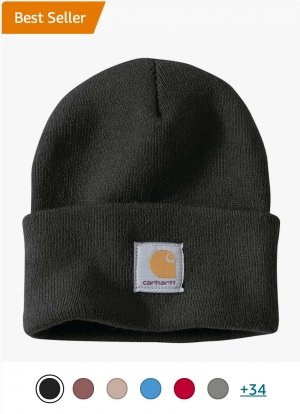

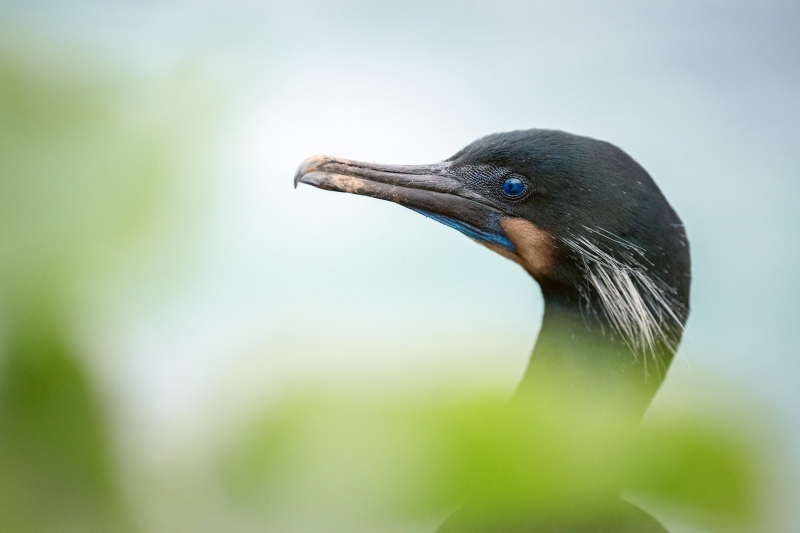
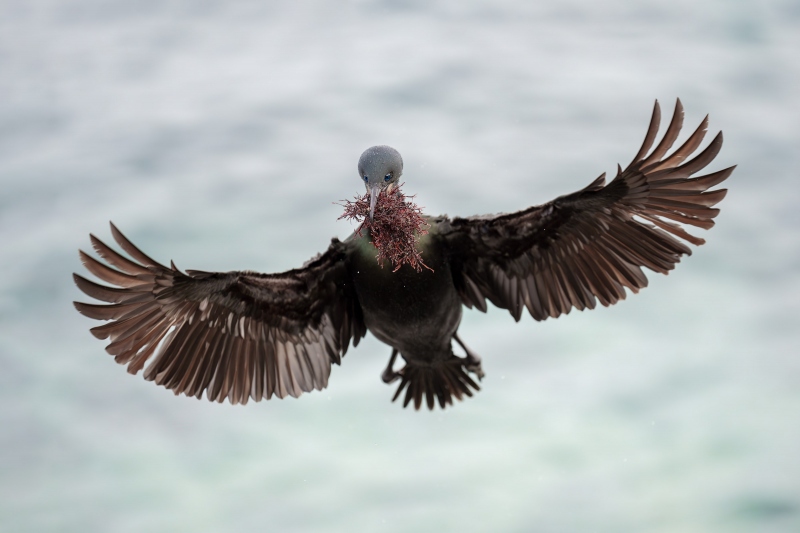
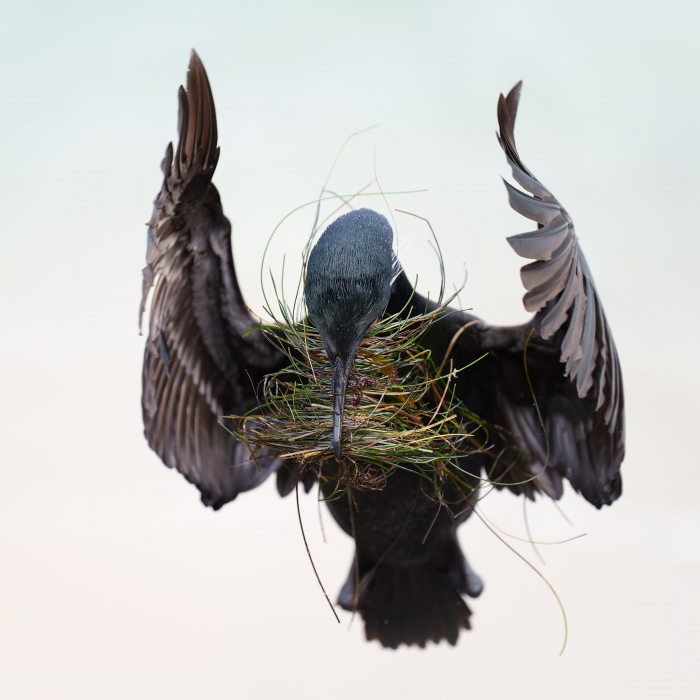
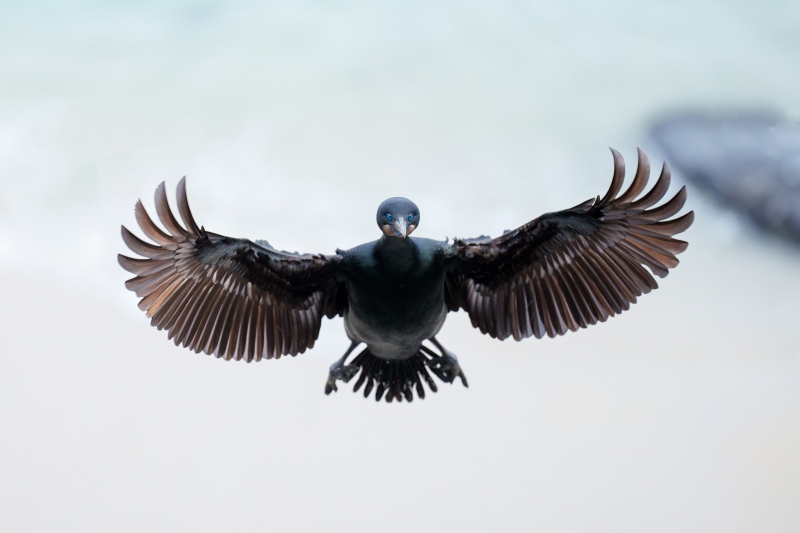
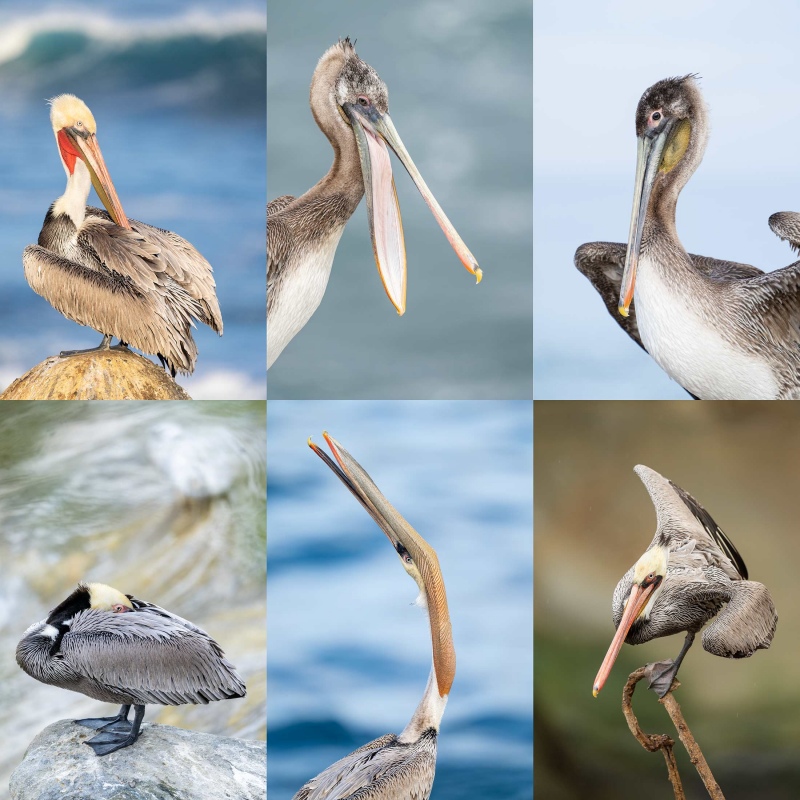
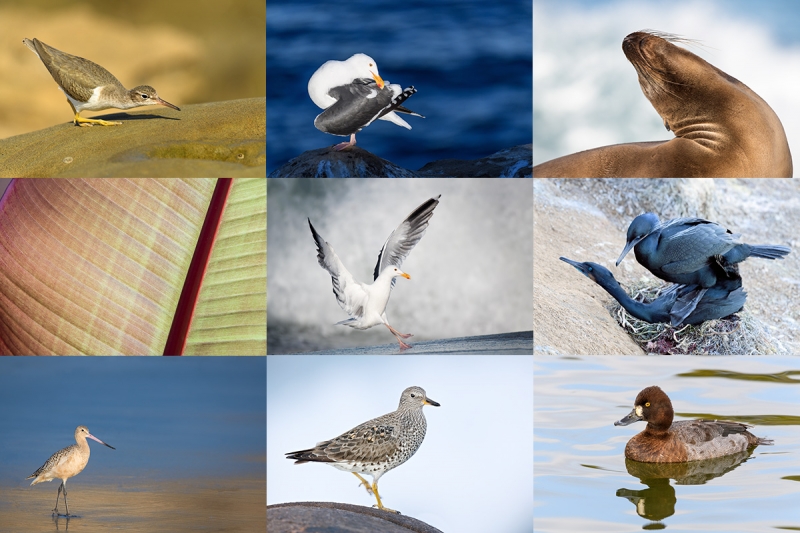















I really like image #3! Great composition.
Image #1 and #2 and #3 and #4 are well made and interesting. And the images of 6 or 8 or 10 are also interesting and well made.
I agree with Maggi Fuller. I’d like to borrow your time-travel machine. It’s Sunday January 21 here in New Mexico.
Image 3 is my favourite, brilliant, with 2 a little way behind. Image 1… too much green blur, and Image 4 has that distraction of… whatever, in the top right corner.
Bought a beanie! Thanks!